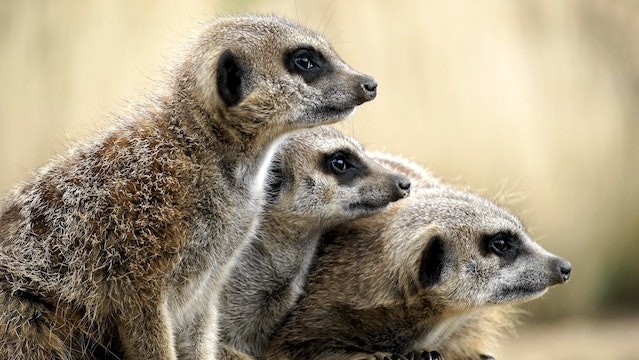
Philadelphia Zoo lost five meerkats in a matter of days. The zoo officials believed the animals consumed a toxic substance, probably from a dye.
Philadelphia Zoo Meerkats Dead
The young members of the southern African mongoose family all fell ill and passed away in less than a month. They were all brought to the zoo in 2013 as siblings and were given the names Nkosi, Lula, Nya, Kgala, and Ari, BBC reported.
Officials believe they may have unintentionally swallowed a dye used to brand them. The officials are still waiting for the results of the necropsy, but they suspect that the meerkats died of dye poisoning.
According to Amy Shearer from the Philadelphia Zoo, they worry that they might have accidentally swallowed something harmful. She added that Nyanzol-D, a dye used to designate and distinguish animals, is likely to be the specific offender.
She admitted that they had been using the dye for over 30 years.
The zoo's vice president for animal wellness, Rachel Metz, claimed that the staff was finding it difficult to deal with the deaths. She told Philadelphia ABC affiliate Action News that the staff spends more time with these creatures than with their families or pets at home. They have a genuine link with the animals, and as a result, they are currently inconsolable.
According to the Associated Press, the dye was applied to the meerkats on June 1. After 30 minutes, one was discovered dead, and the four others soon felt ill.
To determine what caused the animals' deaths, zoo officials are working with the US Department of Agriculture and the Association of Zoos and Aquariums.
According to its website, the Philadelphia Zoo, which claims to be "America's first zoo," opened its doors in 1874 and now has more than 1,900 species under its care.
In other, happier news, the Smithsonian's National Zoo in Washington, DC, declared last month that it would commemorate the first birth of meerkat pups in 16 years.
At two weeks old, the three pups begin opening their eyes and investigating their surroundings. According to the keepers, the newborns appear healthy and strong, and their mother, Sadie, has been nursing them.
ALSO READ : Do Pandas Eat Meat? Rare Albino Panda Spotted Walking in the Snow in China [Watch Video]
What Are Meerkats?
The meerkat, a burrowing member of the Herpestidae family of mongooses, is easily recognized by its erect "sentinel" stance as it scans the area for predators. The thin meerkat has a small, pointed face, tiny ears, and black eye patches.
The smooth, pointed tail is 19 cm long, while the body is approximately 29 cm (11 inches) long, according to Britannica. They come in the dark to grizzled light gray or tan colors, with broad dark bars across the back and a tail with a black tip.
Adults typically weigh less than 1 kilogram (2.2 pounds), with dominant breeders being bigger than subordinates as they age. The meerkat is easily domesticated and occasionally kept as a pet to kill rats.
Few creatures on Earth collaborate as successfully as meerkats do. These mongoose relatives, about the size of squirrels, dwell in groups of three to 50 individuals. Every member of the mob helps in collecting food, keeping an eye out for predators, and caring for the young, the National Geographic Kids added.
RELATED ARTICLE: Record-Breaking Giant Squid Caught in Hawaii, Fisherman Says It Can Make About 100 Plates of Calamari
Check out more news and information on Animals in Science Times.










